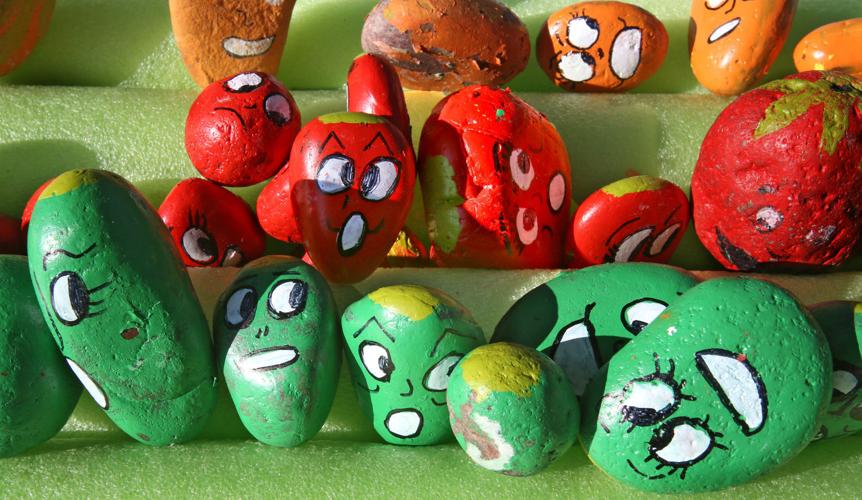Buckets, kitchen utensils, rocks, paint, an old staircase with plastic planters, little toy cars, tiny shovels and forks.
These are what fifth-graders at Manzanita Elementary School used to build activity stations for the school’s kindergarten students’ playground as part of a four-week science and writing project.
The buckets and utensils, which are hanging from a wooden wall, are used to bang together to make sounds. That’s “Sound Wall.”
“It’s important, because later, they are going to be learning about sound and volume,” said Luke Gooding, a fifth-grader at Manzanita who was a part of the playground project.
“We wanted it to be safe so it didn’t have things that would hurt them,” said Molly Kettelle, another student.
The brightly painted rocks, sitting in rows on a raised garden bed, are supposed to be fruits and vegetables. The children called it the “Rock Garden.”
And the toy cars? They travel on mini roads made of rubbery mats. On these roads, the toy cars must obey traffic laws, such as yielding at the appropriate sign. That station is called “Cars and Ramps.”
“Our goal really was to teach the students some skills we know are going to be useful in the real world,” said Nina Hernandez, fifth-grade writing teacher at Manzanita.
Hernandez and the science teacher, Jennifer DeBenedetti wanted to start a project that connected life and community skills, writing and science.
And so the playground project was born. But first, the kids and their two teachers needed buy-in from the school.
In writing class, the children wrote persuasive letters to the kindergarten teachers and the school’s principal, Kim Boling. The kids had to convince them that they were going to build projects that are safe and educational for their younger peers.
What was the principal’s response to the kids? “The reasons you gave were thorough and convincing, and I am happy to say that I approve your project!” she wrote in a reply letter.
Not only did the kids have to write persuasive letters, they also had to come up with proposals for their ideas.
In science class, the kids were learning about changes in the human brain, DeBenedetti said. They were also learning about scientific processes, including variables, control groups and procedure.
Each of the activity stations had to be interactive and encourage the kindergarteners’ learning, she said.
In a way, the fifth-graders were “learning about learning” through building the stations.
The six final projects are now being used in the kindergarten playground. And the fifth-graders are proud of their work.
“I liked all the challenges,” said Ryan Hernandez, one of the students who worked on the project.
The project is done, but the fifth-graders haven’t stopped caring about how to improve the activity stations for the kindergarteners, their teachers said. They are constantly troubleshooting and adding to them.
And the project has gotten support from outside the school, said Nina Hernandez, the writing teacher.
“It really stretched out into the big world, not just our little classroom.”









